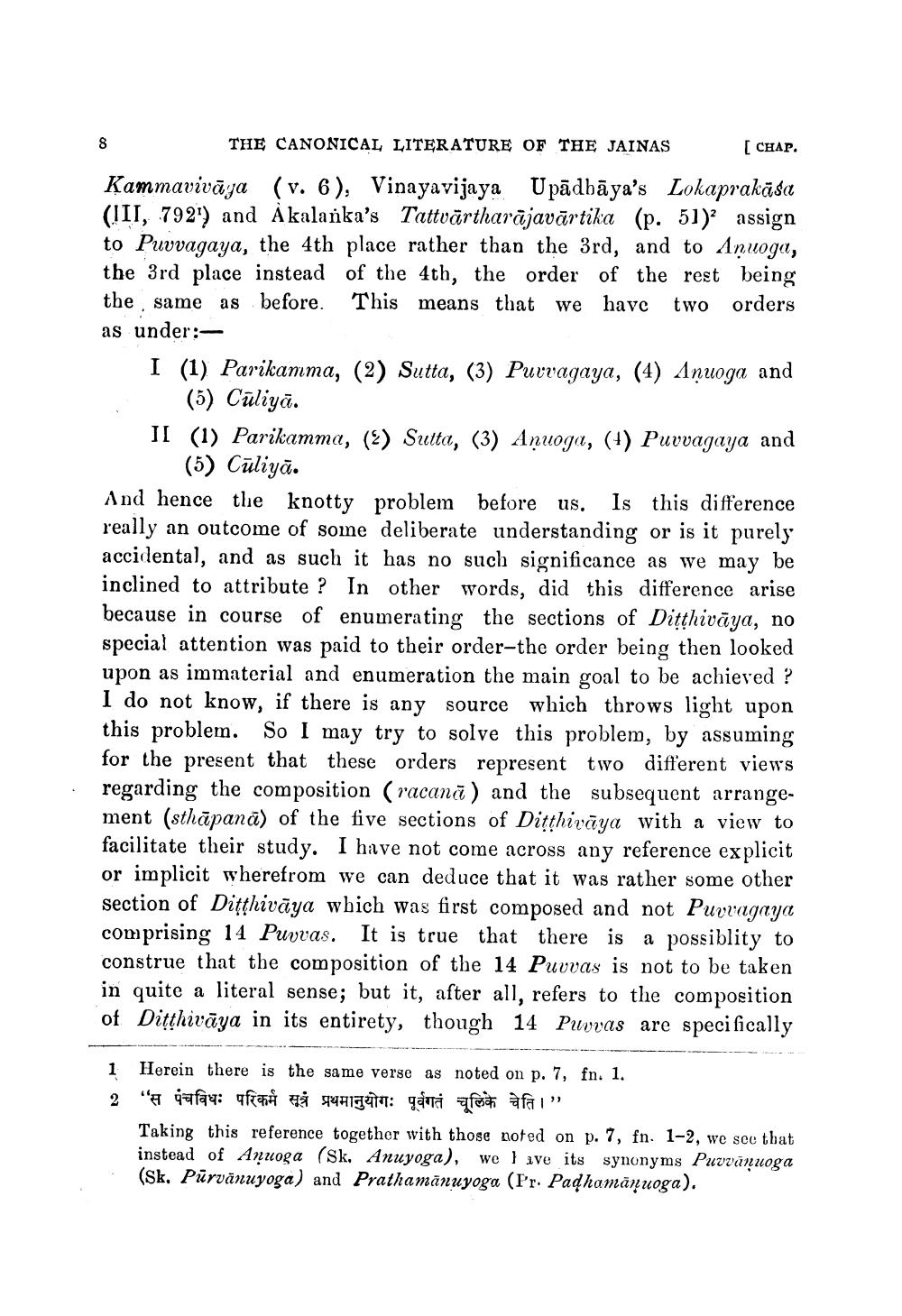________________
THE CANONICAL LITERATURE OF THE JAINAS [CHAP. Kammavivāya (v. 6), Vinayavijaya Upādbāya's Lokaprakasa (III, 792') and À kalanka's Tattvārtharājavārtika (p. 51) assign to Puvvagaya, the 4th place rather than the 3rd, and to Aņuoga, the 3rd place instead of the 4th, the order of the rest being the same as before. This means that we have two orders as under:I (1) Parikanma, (2) Sutta, (3) Puvvagaya, (4) Aņuoga and
(5) Cūliyā. II (1) Parikamma, (2) Sutta, (3) Aņuoga, (+) Puvvagaya and
(5) Cūliyā. And hence the knotty problem before us. Is this difference really an outcome of some deliberate understanding or is it purely accidental, and as such it has no such significance as we may be inclined to attribute ? In other words, did this difference arise because in course of enumerating the sections of Ditthivāya, no special attention was paid to their order-the order being then looked upon as immaterial and enumeration the main goal to be achieved ? I do not know, if there is any source which throws light upon this problem. So I may try to solve this problem, by assuming for the present that these orders represent two different views regarding the composition (racanā) and the subsequent arrangement (sthāpanā) of the five sections of Ditthivāya with a view to facilitate their study. I have not come across any reference explicit or implicit wherefrom we can deduce that it was rather some other section of Ditthivaya which was first composed and not Puvvagaya comprising 14 Puvvas. It is true that there is a possiblity to construe that the composition of the 14 Puvvas is not to be taken in quite a literal sense; but it, after all, refers to the composition of Ditthivāya in its entirety, though 14 Puvvas are specifically
1 2
Herein there is the same verse as noted on p. 7, fn. 1. "स पंचविधः परिकर्म सूत्रं प्रथमानुयोगः पूर्वगतं चलिके चेति ।" Taking this reference together with those noted on p. 7, fn. 1-2, we see that instead of Anuoga (Sk. Anuyoga), we live its synonyms Puvvāņuoga (Sk. Pūrvānuyoga) and Prathamānuyoga (Pr. Padhamāņuoga).




